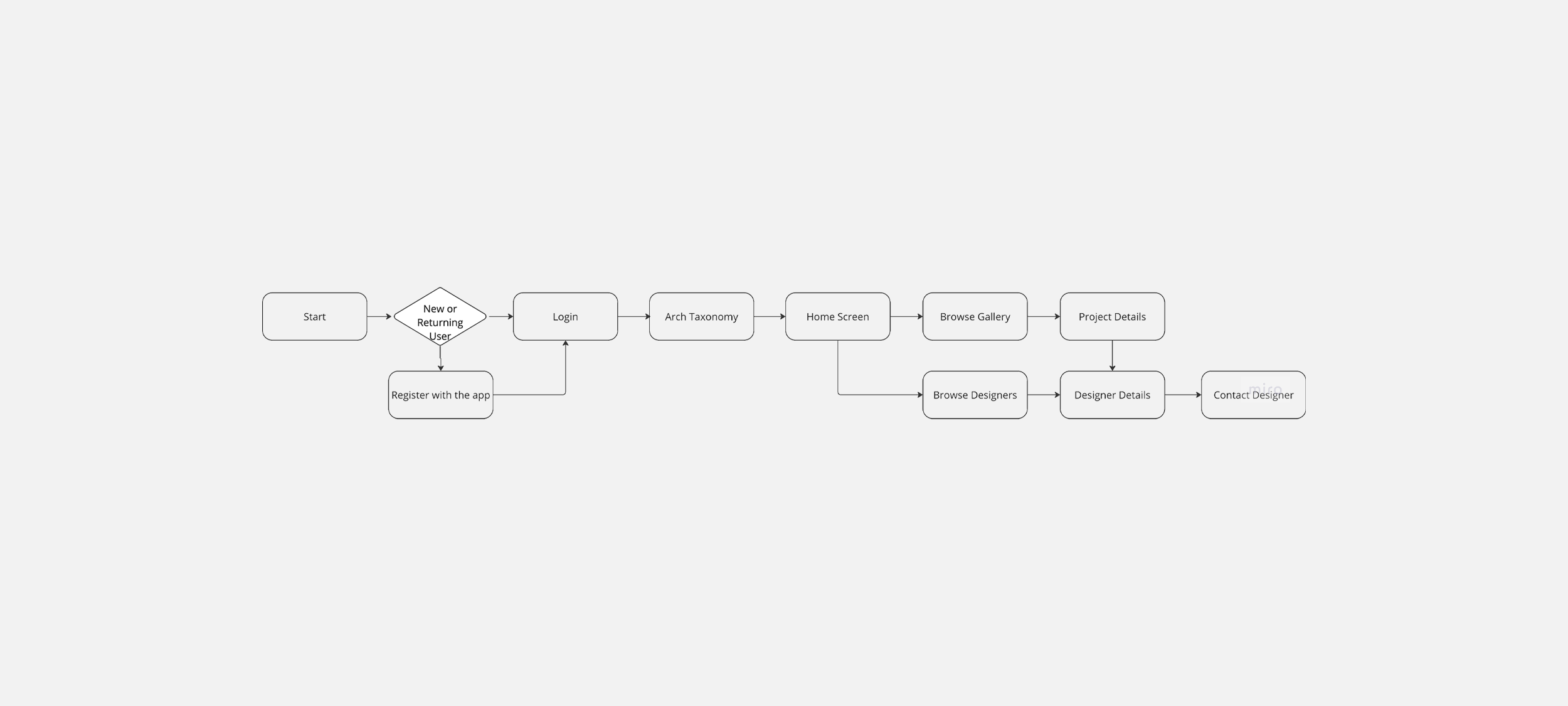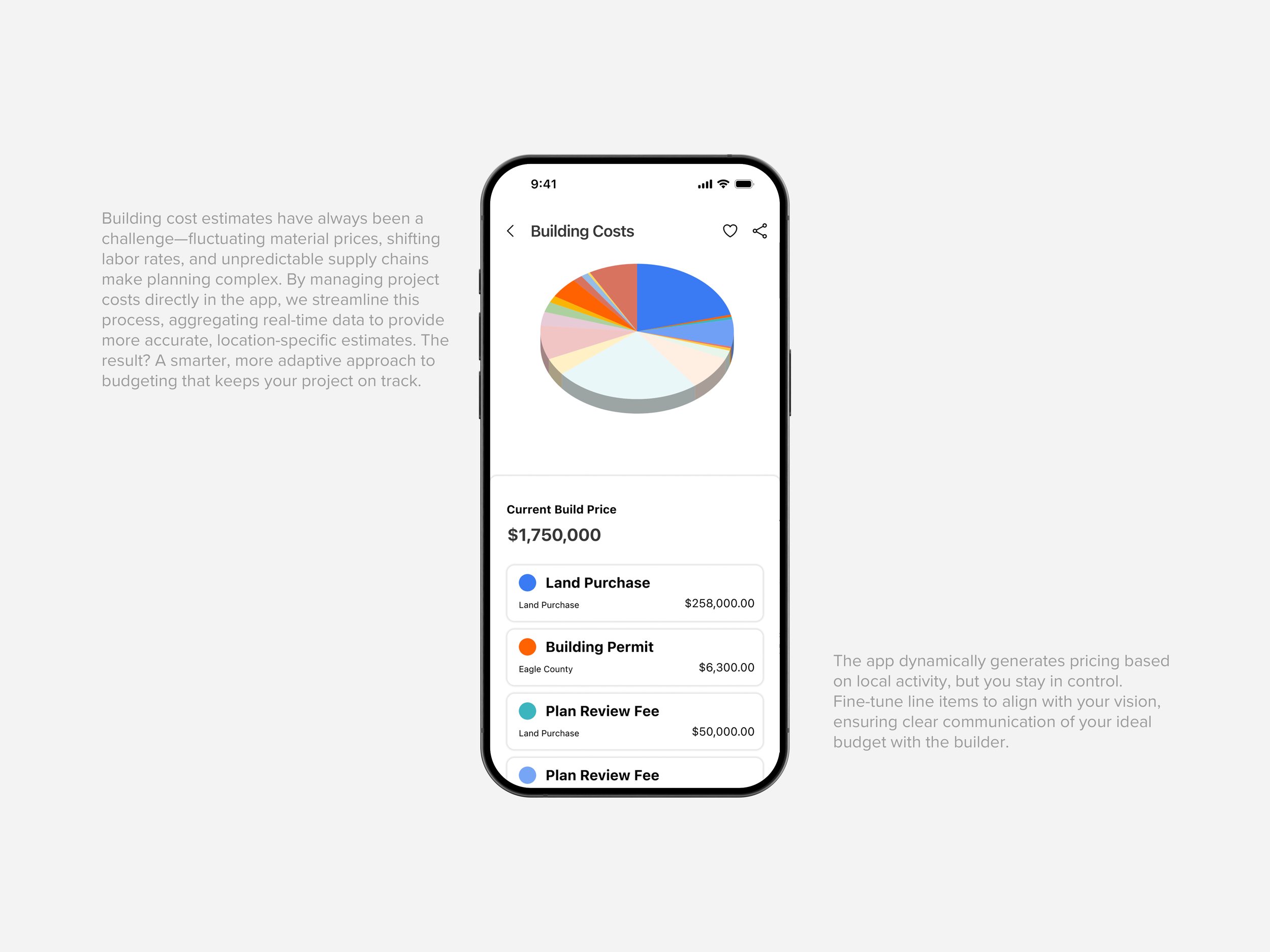Brief
Design should feel like possibility, not exclusivity. Sktch was created to connect everyday homeowners with visionary architects. Whether reimagining a bathroom or building a dream home from scratch, Sktch turns design into an approachable, intuitive, and collaborative experience.
Problem
The dream of a custom home is often blocked by cost, complexity, and limited access to design professionals. Traditional architectural services feel exclusive and are often out of reach for many.
Constraints
High cost and inaccessibility of architecture services
Lack of transparency around pricing
Few platforms that foster meaningful client-designer relationships
Goals
Launch a platform that empowers users to discover and collaborate with a diverse network of architects.
Prioritize transparency, accessibility, and personal connection.
Deliver:
Access: Connect users with a design professional in <48 hours.
Affordability: Reduce custom design service costs by 25%.
Satisfaction: Maintain user satisfaction >90%.
User Research
We interviewed homeowners who wanted tailored, high-quality design, but found existing processes intimidating. Many didn’t know how to start. Key pain points included pricing opacity, firm-centric language, and a lack of approachable professionals.
Persona Creation
Lindy (38–45, Programmer) "I want something tailored to my family’s needs but need expert guidance to bring my vision to life."
Goal: Form a collaborative relationship with design professionals.
Frustration: Unsure where to start, and unable to find approachable designers aligned with their vision.
2. Streamlined Discovery Task Flow
We removed steps between browsing portfolios and initiating a conversation. This redesign reduced user drop-off and improved task success rates.
3. Dynamic Cost Estimator (Mid-Fi to Hi-Fi)
Users needed cost clarity, so we built an interactive estimator with:
A responsive pie chart breakdown (land, labor, design, permits)
Color-coded cost categories with real-time updates
Engineering specs provided to ensure pixel-perfect handoff and WCAG AA accessibility
4. Designer Profiles & Personalization
Refined profile UX to highlight a designer’s background, values, and aesthetic, enabling users to form connections faster.
5. Architecture Style Taxonomy
Developed a searchable taxonomy for users to filter by design style (e.g., modern, craftsman, minimalist) and match with designers.
6. Site Map & Wireframes
Crafted a clear, user-first structure, from project inspiration to designer messaging, eliminating unnecessary friction points.
7. Style Tile & Design System
Established scalable design tokens and type hierarchy to support future growth without sacrificing quality or cohesion.
8. Engineering Handoff
Delivered annotated Figma prototypes with component specs, spacing grids, color codes, and code-ready annotations.
Results
92% User Satisfaction: Average satisfaction score across all project phases.
48-Hour Connection: Users matched with a designer within 2 days of posting.
25% Reduction in Design Costs: Transparent pricing helped democratize access to architecture.
60% Increase in Engagement: Feature adoption rose with improved user flows and style filters.
Takeaways
By making professional design feel human and attainable, we reshaped how users approach architecture. Sktch proves that intuitive UX, thoughtful tooling, and empathetic design can unlock creativity and connection for everyone, not just the elite.












